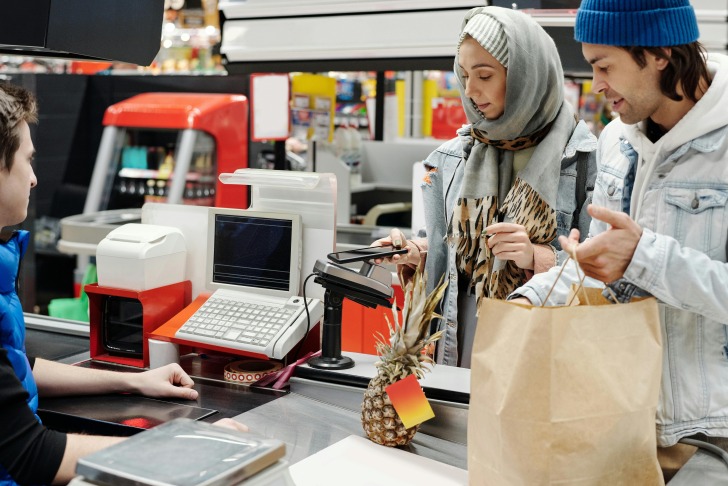Traveling through Europe just got a whole lot easier in 2025.
Now you can wander through gorgeous cities like Vienna and Prague, all while leaving your wallet at home.
With Apple Pay, your iPhone turns into the most important travel companion, letting you focus on making memories rather than reaching for your wallet.
Gone are the days of currency exchanges and lost cards.
Whether it’s a last-minute tour booking or tipping a local guide – smooth transactions allow you to focus on the journey.
Ready to find out which destinations you can now travel to cashless.
Contents
Apple Pay By the Numbers
Apple Pay is expanding its global reach.
By 2024 it had more than 744 million users worldwide, and 61.3 million active U.S. iPhone owners use it daily.
Apple Pay is the preferred method for 92% of mobile debit wallet transactions in the U.S.
The service’s growth aligns with shifting traveler preferences.
Contactless payments reduce fraud risks and streamline airport, hotel, and attraction experiences.
With Apple’s Tap to Pay now launched in five more European countries, exploring these destinations has never been easier.
But the utility goes far beyond coffee runs: Online sports betting providers can use Apple Pay for instant deposits now.
There are some reputable bookmakers and you can read the full list here.
Simply make sure Apple Pay is enabled, enter your amount, and confirm the transaction.
Your balance updates in seconds.
Some platforms offer bonuses for choosing Apple Pay.
That seamless process works across websites and apps – perfect for betting travelers who need quick, secure payments.
Tap to Pay in European Countries
Apple’s new Tap to Pay feature in iOS 18 replaces physical payment terminals with wireless capabilities.
In October 2024 it reached five more countries: Austria, Czechia, Ireland, Romania, and Sweden.
For iPhone XS and newer models, Tap to Pay works with Adyen, SumUp, and Viva.com so businesses can take payments directly from iPhones.
Transactions are encrypted via the iPhone’s “Secure Element” chip.
The feature is also available in Canada and beyond – although the EU’s Digital Markets Act has accelerated this rollout.
For travelers, that means fewer card swaps and more time experiencing the local culture.
Austria: Imperial Empire Meets Digital Innovation
Now, Austria’s Baroque architecture and alpine trails are paired with Apple Pay.
Using your iPhone in Vienna you can buy tickets for the Belvedere Museum or settle a cafe bill after wolfing down Sachertorte.
Innsbruck and Kitzbuhel ski resorts accept tap-and-pay for lift passes and equipment rentals.
Even traditional markets like Salzburg’s Christkindlmarkt accept Apple Pay.
Partners like Erste Bank handle all the transactions – book a Sound of Music tour or a horse-drawn carriage ride.
Austria proves that old-world charm doesn’t have to be without modern tech. That’s why some become more than tourists and choose to move and live in Austria after their visit
Czech Republic: Fairytale Cities, Future-Ready Payments
The Gothic spires of Prague and the Charles Bridge stand in contrast to the modern payment system in Prague.
Use Apple Pay to enter Prague Castle, buy a trdelnik (sweet pastry) from a street vendor or book a jazz night in a Mala Strana cellar bar.
Beyond the capital, Cesky Krumlov’s medieval lanes and Karlovy Vary’s thermal spas support the tapestry of To Pay.
Public transport accepts Apple Pay, even in Brno and Olomouc. Some rural wineries in Moravia accept cash with Global Payments, empowering small vendors.
Nowhere else combines fairytale settings and history with innovation like the Czech Republic.
Ireland: Cliffs, Castles, and Contactless Ease
The Emerald Isle now accepts Apple Pay.
Tapping your iPhone in Dublin is the craic. Join a Guinness Storehouse tour or pay for fish and chips in a seaside pub.
Along the Wild Atlantic Way, remote B1 and B1Bs and ferry services to the Aran Islands accept tap-and-pay, reducing cash use in rural areas.
Adyen integrates with Irish banks for easy payments at the Cliffs of Moher and Kylemore Abbey.
Even the cozy pubs in Dingle and Galway‘s boutique shops are accepting Apple Pay, evidence of Ireland’s tech-savvy spirit and hospitality.
Romania: Dracula Legends Meet Digital Speed
Its Carpathian castles and painted monasteries are accepting of Apple Pay.
Use tap to pay for Bran Castle tickets or sarmale (cabbage rolls) in Brasov.
Contactless payments are also accepted in Bucharest‘s hip Lipscani district and at some of the Danube Delta eco-lodges.
Platforms like Viva.com let small businesses accept iPhone payments – from Sibiu’s Christmas markets to Maramures’ wooden churches.
Romania blends folklore and tech, so you can pay to explore Transylvania’s mysteries without payment worries.
Sweden: A Cashless Utopia Powered by Apple Pay
A cashless society integrates with Apple Pay.
Use it at the ABBA Museum in Stockholm or grab a cinnamon bun in Gamla Stan cobblestone alleys.
The Northern Lights tours in Kiruna and the Icehotel in Jukkasjarvi accept iPhone payments as well.
Even places as remote as Gotland’s Viking ruins or the archipelagos’ seafood shacks support Apple Pay through partnerships with companies like PayONE and Nexi.
Sweden’s tech-forward vibe means every transaction runs like a midsummer sunset.
Apple Pay is changing how you pay – and how you travel.
Your iPhone unlocks seamless experiences in Europe’s most iconic destinations – from Austria’s peaks to Sweden’s Arctic wonders.
Why juggle cash or cards when your wallet is in your pocket?
Your next destination is just a tap away.











